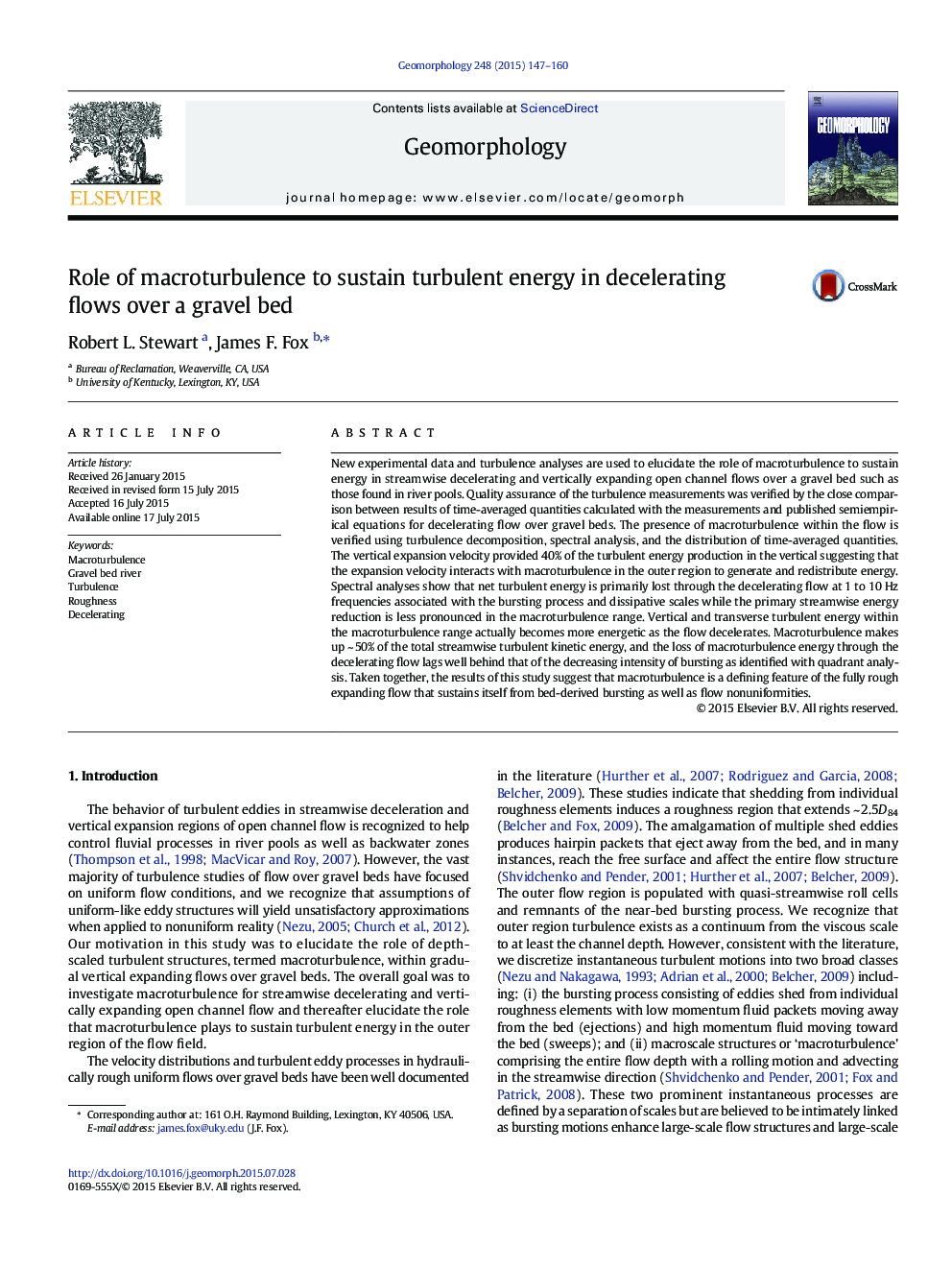| Article ID | Journal | Published Year | Pages | File Type |
|---|---|---|---|---|
| 6432040 | Geomorphology | 2015 | 14 Pages |
New experimental data and turbulence analyses are used to elucidate the role of macroturbulence to sustain energy in streamwise decelerating and vertically expanding open channel flows over a gravel bed such as those found in river pools. Quality assurance of the turbulence measurements was verified by the close comparison between results of time-averaged quantities calculated with the measurements and published semiempirical equations for decelerating flow over gravel beds. The presence of macroturbulence within the flow is verified using turbulence decomposition, spectral analysis, and the distribution of time-averaged quantities. The vertical expansion velocity provided 40% of the turbulent energy production in the vertical suggesting that the expansion velocity interacts with macroturbulence in the outer region to generate and redistribute energy. Spectral analyses show that net turbulent energy is primarily lost through the decelerating flow at 1 to 10Â Hz frequencies associated with the bursting process and dissipative scales while the primary streamwise energy reduction is less pronounced in the macroturbulence range. Vertical and transverse turbulent energy within the macroturbulence range actually becomes more energetic as the flow decelerates. Macroturbulence makes up ~Â 50% of the total streamwise turbulent kinetic energy, and the loss of macroturbulence energy through the decelerating flow lags well behind that of the decreasing intensity of bursting as identified with quadrant analysis. Taken together, the results of this study suggest that macroturbulence is a defining feature of the fully rough expanding flow that sustains itself from bed-derived bursting as well as flow nonuniformities.
